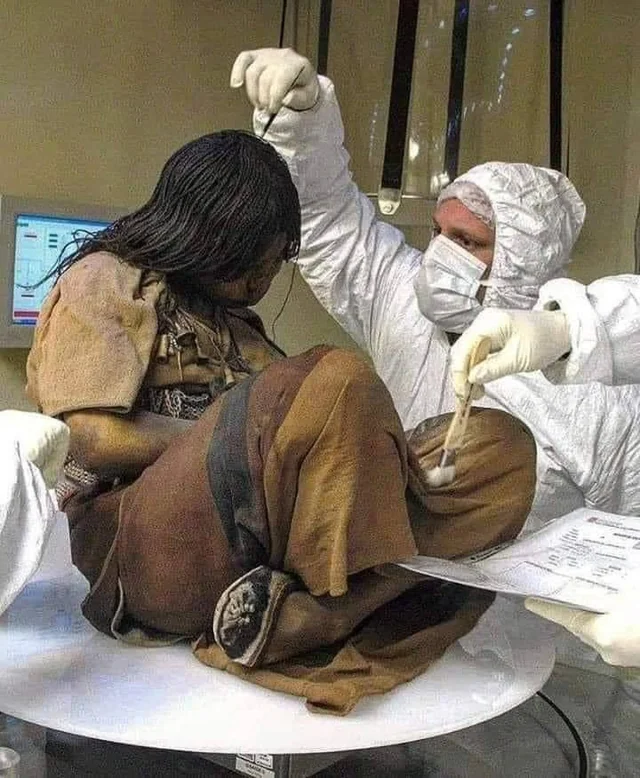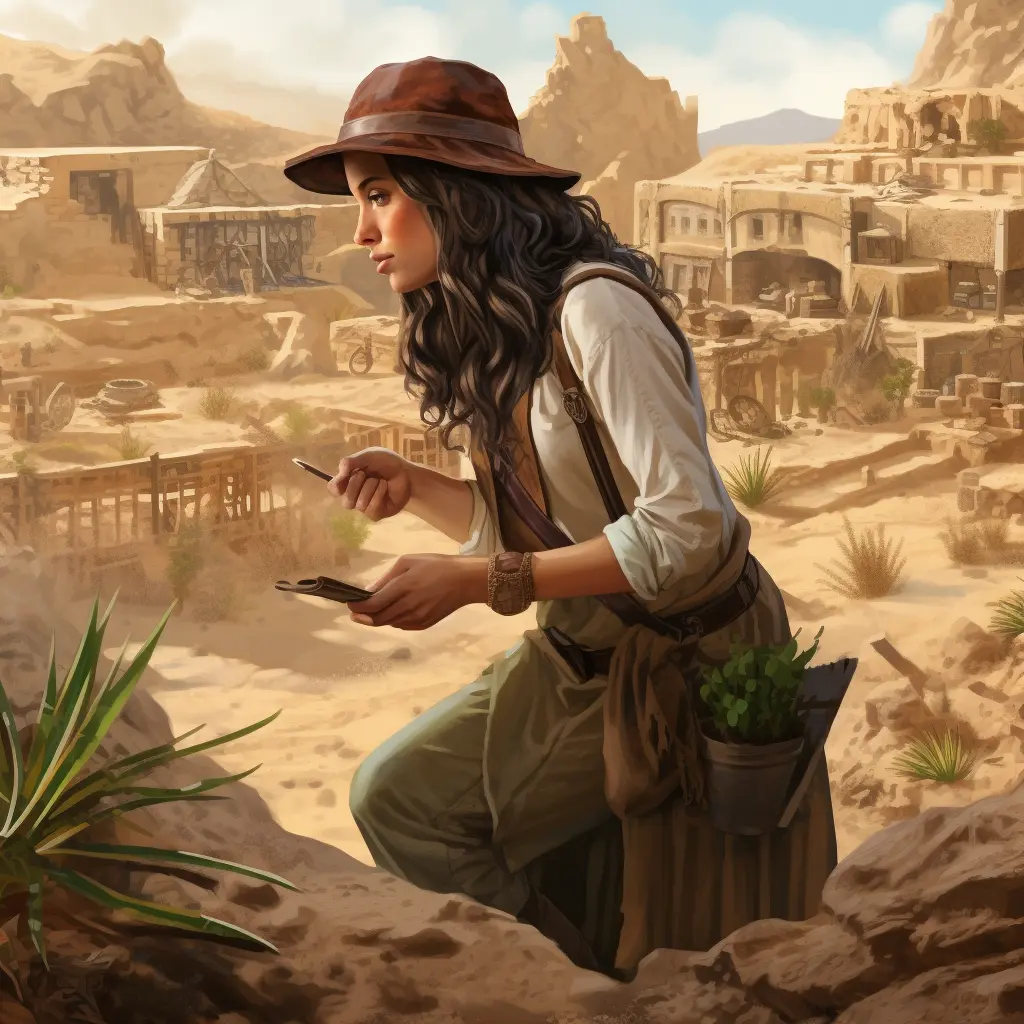
A Brief Overview of the Inca Empire
In the 13th century, a powerful civilization known as the Incas thrived in the Andean region of South America. Notable for their monumental architecture, innovative agricultural techniques, and intricate textiles, they ruled over the largest empire in pre-Columbian America until the Spanish conquest in the 16th century.
Contextualizing the Subject: ‘Inca girl’
Discovered in Argentina’s Mount Llullaillaco, the ‘Inca girl’, also known as the ‘Ice Maiden’, provides a captivating glimpse into the spiritual practices of the ancient Inca civilization. This well-preserved mummy, thought to be a 15-year-old sacrifice, offers scientists invaluable information about this civilization’s rituals, diet, health, and societal hierarchies.
Historical Discovery
The Discovery of ‘Inca girl’
In the serene heights of Mount Ampato in Peru, archeologists made a remarkable find in 1995. Nestled amid the icy cap of the peak rested a perfectly preserved mummy of a young adolescent girl, leading her to be fondly called ‘the Ice Maiden’. Initial studies determined her to be a sacrifice made by the Inca civilization, once proud rulers of the region. The severe cold at the mountain peak played an extraordinary role in halting any decomposition process and her hair, clothes and body were found in an exceptional state of preservation, making her an invaluable gateway to unlocking mysteries of the past.
Significance of the Discovery
Unraveling the enigma surrounding the life and customs of the ancient Inca civilization, the preservation of the ‘Inca Ice Maiden’, as she’s often referred to, offers an unfiltered window into the past. Bearing witness to the complexity of Incan rituals, specifically Capacocha or child sacrifice, it reveals the significance religious ceremonies held in their society. The pristine condition of the young maiden, named ‘Juanita’ by her discoverers, presents an unprecedented opportunity for scientists.
By studying her, they’ve been able to gain invaluable insight into her diet, health, way of life, and even the causes of her death. The artifacts found alongside her further highlight the intricacy of Incan burial rites and societal hierarchy, suggesting that she was of high social status. Likewise, her clothing and adornments provide an authentic portrayal of Incan textile and craftsmanship, which were universally revered.
With each examination of ‘Juanita’, new, intricate details about the formidable Inca Empire are unraveled, rendering her discovery instrumental in understanding and appreciating the depth and richness of her civilization. Even after half a millennium, ‘Juanita’ continues to educate us, invariably reinforcing the significance of her preservation in deciphering the narrative of human history.
Read: Did Isaac Newton Invent The Cat Door?
Preservation Methods
The Natural Mummification Process in the Andes
High in the Andes Mountains, fascinating natural preservation techniques provided the perfect conditions to mummify bodies, much like that of the 500-year-old Inca girl. The Andes’ combination of freezing cold nights, a rarefied atmosphere due to high altitude and drying, desiccating winds, worked harmoniously to effectively inhibit the growth of bacteria that would usually cause decomposition.
Once the person had passed away, their body was normally left exposed to these elements, wherein the extreme climate stopped the decomposition process almost immediately. The deceased’s body fluids would gradually evaporate because of the dry air and, over time, this would mummify the body. This fascinating, if not unconventional, approach to mummification encapsulates the harmony between man and nature deeply ingrained in Inca culture, maintaining an unbroken bond even in death which underlines the magnificence of the natural world in its capacity for preservation.
The Condition of the Inca Girl: Remarkable Preservation
Emerging from her icy tomb, the so-called ‘Inca Ice Maiden’ is an astounding illustration of natural mummification. Encased in the snow-capped peaks of Mount Ampato in southern Peru, the freezing temperatures remarkably acted as an intuitive freezer and kept her sealed off from decomposition and damaging insects.
Moreover, the dry mountain air facilitated the natural mummification process, helping to dehydrate the body and hence, stave off decay. When discovered in 1995, the world was drawn to her immaculate condition; her skin, clothing, blood and even internal organs were preserved almost to perfection. Shreds of her clothing – intricately designed garments – bore testament to Inca weaving techniques. Similarly remarkable were her intact internal organs which offered insights into her diet and health.
The fortified preservation of ‘Juanita,’ as she is often referred to, proffers an unprecedented time capsule into ancient Inca life. So comprehensively preserved was the maiden that scientists could even discern her last meal – a hearty mix of vegetables.
Insights into Inca Culture
Understanding Inca Death Practices
The Incas held a complex view on death, viewing it not as an end but a continuation of life’s journey. Their practices included mummification and burial with treasured possessions to aid in the afterlife. The Inca maiden, discovered after five centuries, provides a rare glimpse into these rituals. This young girl was likely offered as a capacocha — a sacrifice to the Inca deities, usually during crises.
Her impeccably preserved state, with her clothes intact and borderline serene expression, suggests meticulous preparation. Her presence offers an invaluable opportunity to delve deeper into this aspect of Inca life. Surprisingly, even after 500 years, she continues to reveal secrets and shed light on the long-gone civilization’s belief systems.
Ritual Sacrifice in Inca Civilization
Unveiling the mysterious practices of the Inca civilization, the mummified remains of the 500-year-old girl offer unique insights. The Incas had a tradition known as ‘capacocha’, where children, often of noble descent, were selected for ritual sacrifices meant to honor or appease their deities. These sacrifices were typically carried out during or after significant events, like the death of the Emperor or a particularly bountiful harvest.
Archeological evidence strongly suggests that these young sacrifices were treated with utmost respect, and not with fear or plight. Before the arduous procession to the designated sacred sites, they were often given intoxicants. The final stage of the ritual was a lethal blow to the head or, as in the case of the ‘Ice Maiden’, left to perish in the high-altitude conditions. Amid these commanding peaks, the maiden met her untimely end, forever preserving a slice of the Inca’s powerful, yet heartrending, cultural identity.
Read: What are the 4 Fallen Angels Under Euphrates River?
Life in Inca Society – What we learn from the Inca girl’s artifacts
Scanning through the diverse relics found alongside the preserved Inca maiden provides us with a fascinating snapshot of her lifestyle and the greater Inca society. Among the artifacts, textiles, ceramics, and statuettes held valuable information about Inca craftsmanship, religion, and social strata. Intricate clothing articles revealed the skilled artistry of Inca weavers, with complex patterns possibly signifying the girl’s social rank.
The presence of llama figurines suggested the high importance of these animals to the Inca, used for transport, food, and clothing. Meanwhile, corn, quinoa, and other food remnants shed light on traditional Inca cuisine; the food’s remarkable preservation hinting at their advanced knowledge in drying and storing produce. Lastly, carefully crafted utensils implied communal feasting practices, hinting at Inca’s social dynamics. Hence, every artifact, whether substantial or minute, advances our understanding of the sophisticated and vibrant culture that thrived in ancient Andean society.
Scientific Investigation
The Forensic Analysis of the ‘Inca girl’
Delving into the mysteries of the past, scientists conducted meticulous forensic examinations on the well-preserved remains of the child, known as the ‘Ice Maiden’. Advanced technology, including computed tomography (CT) scans and DNA testing, revealed astonishing details. These tests indicated that she was approximately 13-15 years old when she died. Trace elements in her hair suggested a diet rich in maize and seafood, common to the Inca elite. Tragically, the discovery of a fatal blow to the skull highlighted the ritual sacrifice customs of the Inca empire. Thus, opening up a window into a civilization that has long since vanished.
What the Scientific Tests Reveal
After being perfectly preserved in ice for half a millennium, the ‘Inca Ice Maiden’ offered a unique opportunity for scientific study. Tests performed on her body offered a wealth of fascinating insights into the past. Detailed scans showed signs of a diet rich in maize and seafood, hinting towards a noble origin. Furthermore, biological examinations revealed traces of lung infection, likely leading to her demise. The presence of coca leaves and alcohol in her system presented evidence that she was drugged before being sacrificed. With each revelation, this ice mummy is steadily unlocking secrets of the Incan empire.
Ethical Considerations and Controversy
Handling and Displaying Indigenous Artifacts and Remains
Respecting ancient culture is crucial when dealing with artifacts and remains like “The Inca Ice Maiden”. Ethical dilemmas arise regarding their exhibition and handling. Questions of ownership, cultural sensitivity, and potential spiritual affront are widely discussed. Authorities wrestle with displaying such items without infringing upon indigenous rights, implying a pressing need for effective dialogue and proper guidelines.
The Debate over Ownership and Patriation
The ice mummy sparks dispute about its rightful proprietors. While some argue it should remain with its current custodians for scientific reasons, others suggest it be returned to its ancestral home, respecting cultural heritage. There’s a tension between contributing to historical understanding and honoring indigenous rights, making this a contentious ethical issue.
Conclusion
The Influence and Impact of the Discovery
The unearthing of the Inca maiden has greatly enhanced our comprehension of ancient Inca society, shedding new light on their religious beliefs and practices, particularly human sacrifice. Moreover, the impeccably preserved body has provided incredible insights to scientists about the diet, lifestyle and health conditions prevalent during that era, prompting a reevaluation of our historical knowledge.
Final Thoughts on the Inca Girl Frozen for 500 Years
In wrapping up, the preservation of the ‘Ice Maiden’ offers an unprecedented glimpse into Incan civilization, presenting an extraordinary narrative of the past. Her existence, in her frozen silence, kindles profound intrigue, underscoring the significance of archaeology in decoding history and enhancing our understanding of pre-Columbian cultures.



